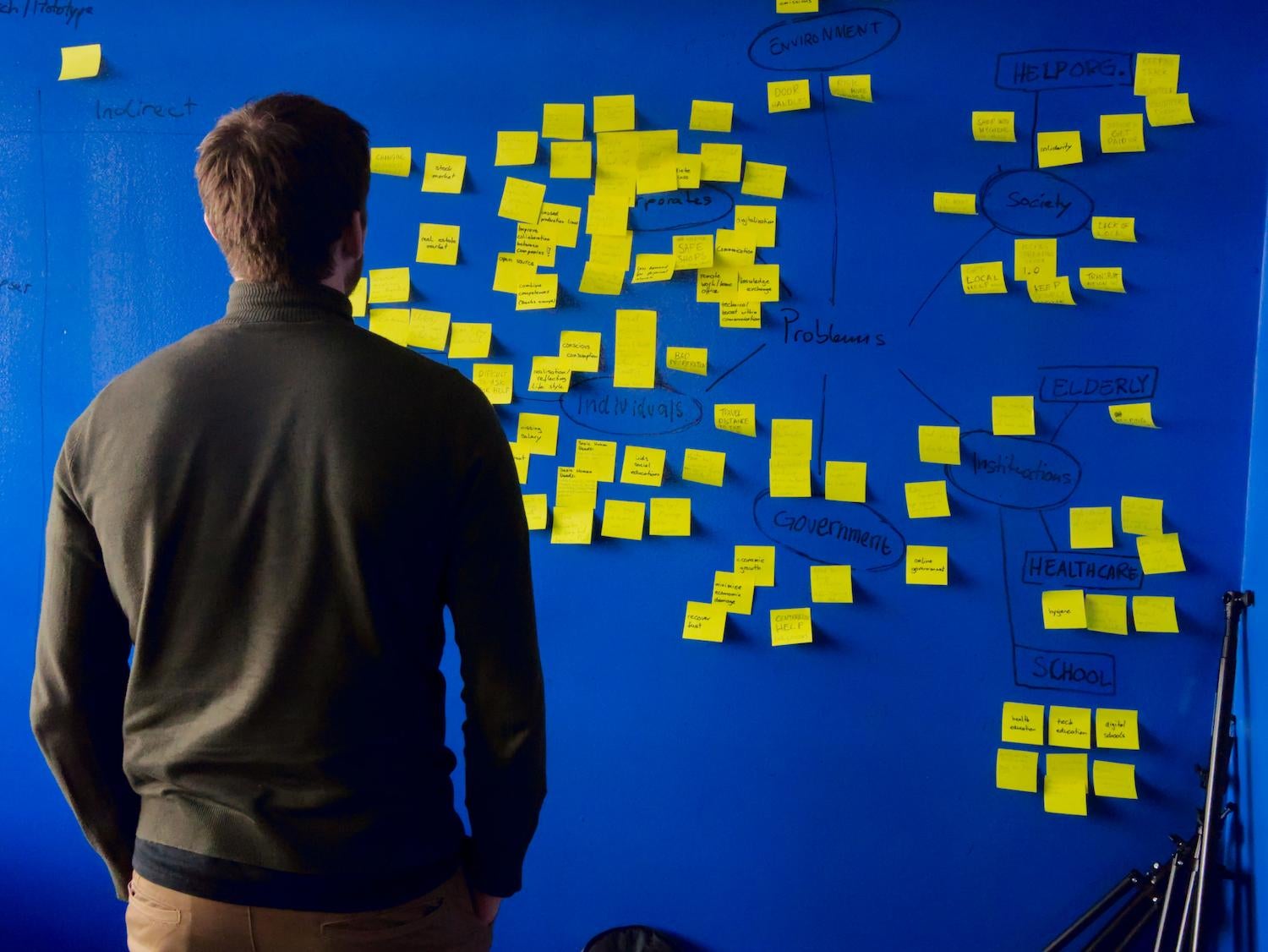Lean startup is a business model that involves growing a business by adapting it to market realities. Its goal is to build a profitable business (or a new branch of it) as quickly as possible. It is guided by the following thought of Peter Drucker, "There is nothing as senseless as doing extremely efficiently what should never have been done".
The Lean Startup method is used in situations characterised by extreme uncertainty or gouging business risk which makes it impossible to predict exactly what might happen. This is exactly the reality of today. You never know what tomorrow will bring.
However, it is important to emphasize that the lean startup model is not a collection of tactics. Rather, it represents a structured approach to developing or launching new products.
Where to Start
In this approach, before leaping straight into action, it is most important to answer four questions:
- Do customers know that they have a problem that you are trying to solve with your new product?
- Would they choose to buy the solution to that problem if it existed?
- Would they buy it from you?
- Can you build a solution to this problem?
The answers formulated to these questions are acts of faith – hypotheses, that must be confirmed or disproved. To do this, you must create a minimally satisfying (non-perfect) product and conduct experiments and empirical tests to make sure that there is a sufficiently large group of customers interested in it on the market.
Minimally satisfying product (MVP)
First versions of the product do not have to be perfect. Their goal is one: to verify two assumptions that are acts of faith: that you offer tangible value to customers and that you have an effective growth engine.
Here’s an example from one of the most powerful companies in the IT world.
Facebook investors were most impressed by two things:
- confirmation of the value hypothesis: the time spent on the site by users (more than half log on there daily) confirmed that clients consider this product to be valuable.
- confirmation of growth hypothesis: the rate at which Facebook was increasing the number of users (service launched in early February on Harvard campus, by the end of the month almost ¾ of students were using it) confirmed the hypothesis of rapid growth without spending a dime on marketing or advertising.
The first versions of a product don't have to be complex either. Sometimes, the simplest smoke tests will suffice, and other times a prototype is needed. It's always a subjective decision. The most important idea behind this is a maximum simplification because any extra work that adds nothing to the process of learning customer needs is a form of waste. Why? Because a minimally satisfying product is created with the most important question in mind: what would it take to get customers interested in the product and willing to tell their friends about it?
Experiments
Experimentation takes more than just creating the first product. It is the process of creating the first and every subsequent product, modified until it achieves its goals.
The point is that once the manager has the first, preliminary and imperfect version of the product, they can proceed to concrete actions, such as gathering early market participants, introducing changes to the product, and checking how customers react to these changes. It takes many experiments to finally start working on the final version. However, thanks to that, when the product is ready for mass distribution, it has a sizable customer base and solves real problems.
The most important goal of the experiments is to observe the actual behaviour of the participants. The most important questions are:
- How many participants took part in the experiments until the very end?
- How many volunteered to do the experiments a second time?
- How many agreed to recruit colleagues to participate in your experiments?
And last but not least: running experiments should be done before the marketing campaign begins.
Testing
For testing, don't look for an average customer, but an early market participant. Choose a person who urgently needs to use the product. Such a customer is most likely to forgive mistakes and shortcomings and is positively inclined to give feedback to the company. They also have the most to gain from participating in this type of venture.
Such customers, with the help of their imagination, complement the imperfection of the product. They care about being the first to use given product or technology.
On the consumer market, it's about showing off a new phone, for example. And in the running market, it's about gaining a competitive advantage by taking risks and using something new that market rivals don't yet know about.
Learning and direction
You have an idea. You've created a minimally satisfying product. You've gathered early-market customers to test your imperfect version. What's next?
It's time for measurement - collecting data and learning from it. The process is simple: you propose improvements - you make them - you show them to customers - you take measurements and again, propose improvements based on them.
In this stage, the biggest challenge is to determine whether the product development work yields real progress. Let's be honest, if you create something that no one wants, nothing really matters. But, then how do you know which features to prioritize? How to get more paying customers? How to promote our product?
You need to answer these questions:
- How confident are you that your prioritization decisions are right?
- Which activities create value, and which are a form of waste?
The customer is the most important part of the production process. Therefore, you should focus all your activities solely on achieving results of value to the customer. Customers are not interested in how long it takes to build a feature - they are only interested in whether it satisfies their needs.
What separates great successes from great failures?
Nowadays, successful companies can no longer expect to be on top for years. They have to take into account fierce competition, imitators and copycats. Therefore, they should look for breakthrough innovations.
When thinking about creating a new product, they should follow a simple rule: eliminate all features, functions, processes and activities that are not directly related to the knowledge they would like to acquire.
Company effectiveness is not measured by the number of new product features or "innovative" products. It is measured by its ability to respond to business realities with appropriate actions and create products that have value for the customer and are a source of growth for the company.
Successful entrepreneurs have the right tools, competencies and foresight to modify their strategies accordingly. They also create a healthy organizational culture where ideas are judged by their actual value and not by the position of their authors in the organizational hierarchy.
If you are interested in this topic, I encourage you to read the book by Eric Ries: "Lean Startup Method. Use innovative tools and create a company that will conquer the market".

